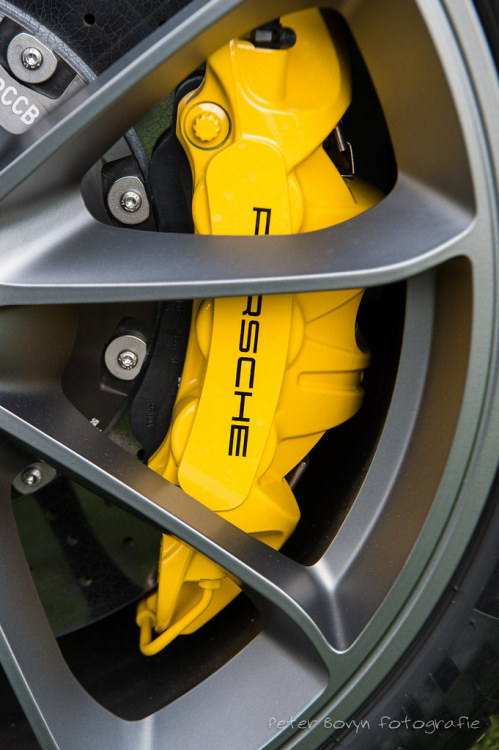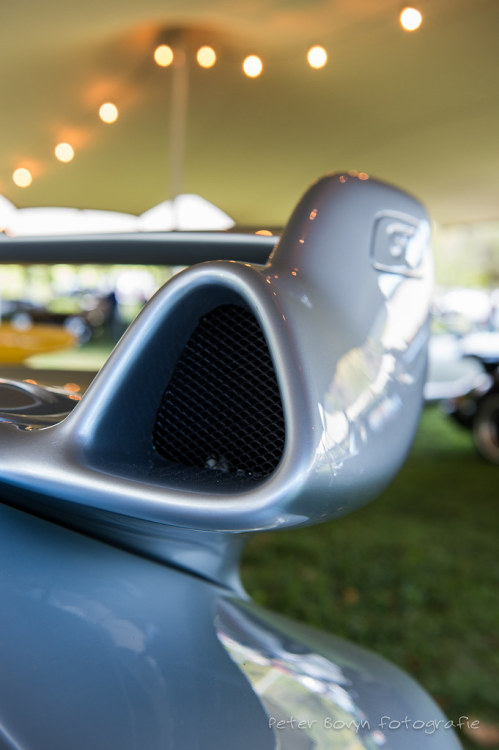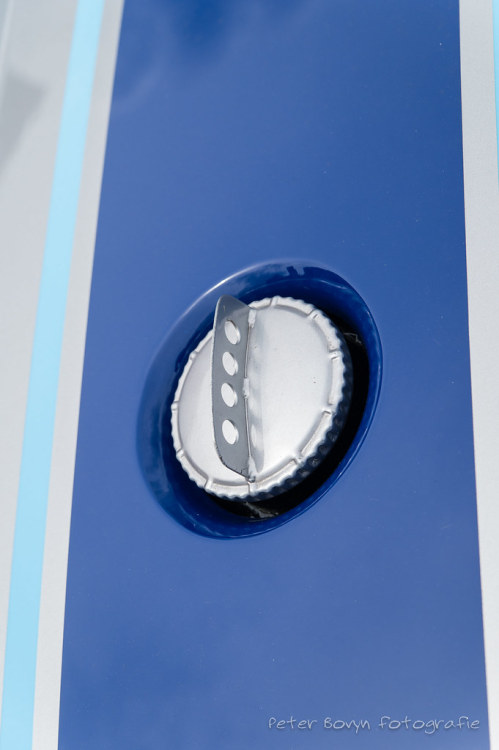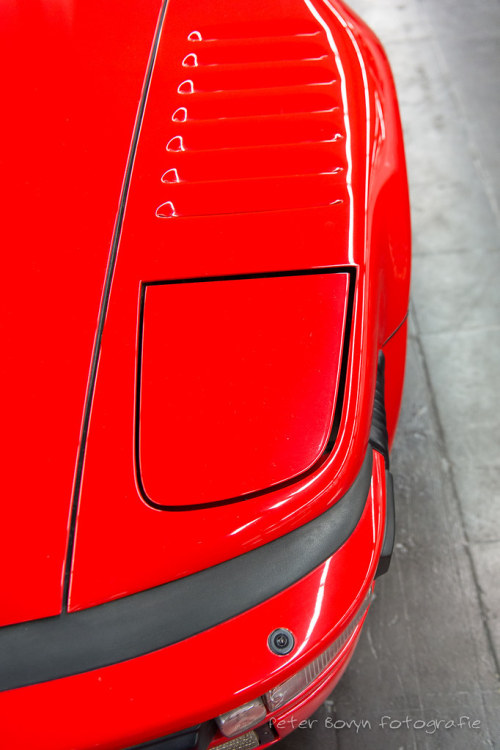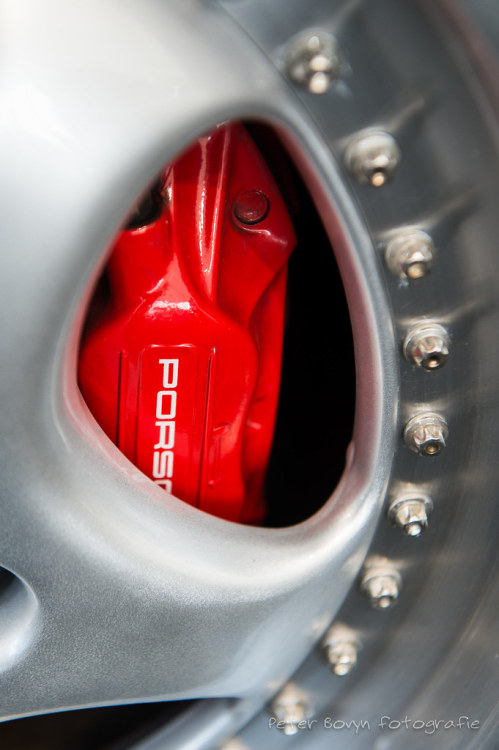
Porsche 911 Turbo 3.6 - 1993 by Perico001 Porsche 964
Bonhams : the Zoute Sale
Estimated : € 150.000 - 180.000
Sold for € 195.500
Zoute Grand Prix 2018
Knokke - Zoute
België - Belgium
October 2018
‘The new engine turned out to have enormous marketing power. It became a real status symbol to have that little word 'turbo’ on your rear deck, and this fashion spread right across the motor industry.’ - Peter Morgan, 'Original Porsche 911’.
Much of the Porsche 911’s development had resulted from the factory’s racing programme, and it was the then Group 4 homologation rules, which required 400 road cars to be built, which spurred the development of 'Project 930’ - the legendary 911 Turbo. In production from April 1975, the Turbo married a KKK turbocharger to the 3.0-litre RSR engine, in road trim a combination that delivered 260 bhp for a top speed of 250 km/h. But the Turbo wasn’t just about top speed, it was also the best-equipped 911 and amazingly flexible - hence only four speeds in the gearbox - being capable of racing from a standstill to 62km/h in 14 seconds.
The Turbo’s characteristic flared wheelarches and 'tea tray’ rear spoiler had already been seen on the Carrera model, while the interior was the most luxurious yet seen in a 911, featuring leather upholstery, air conditioning and electric windows. The Turbo’s engine was enlarged to 3.3 litres for 1978, gaining an inter-cooler in the process; power increased to 300 bhp and the top speed of what was the fastest-accelerating road car of its day went up to 260 km/h. More refined than hitherto yet retaining its high performance edge, the Turbo sold in the thousands, becoming the definitive sports car of its age. When Porsche revealed that the original 911 would be replaced by the new Type 964 in 1990, dealer stocks of the existing Turbo model sold out overnight.
Representing a major step forward for the 911, the new Carrera 4 and Carrera 2 - coded named '964’ - were launched in 1989, the former marking the first time that four-wheel drive had been seen on a series-production 911. Porsche had experimented with four-wheel drive on the 959 supercar, and many of the lessons learned from the latter influenced the design of the 964’s chassis and suspension. Face-lifted but retaining that familiar shape, the Carreras had been given a more extensive work-over mechanically, 87% of parts being claimed as entirely new. Although the normally aspirated duo shared the same 3.6-litre, 247 bhp, flat-six engine, the Turbo initially kept its existing 3.3-litre unit, which now developed 320 bhp. Power-assisted steering (another 911 'first’), anti-lock brakes, and a five-speed manual transmission were standard, with the Tiptronic auto 'box a Carrera 2-only option. In October 1992 the Turbo received the 3.6-litre M64/50 engine, which in 'blown’ from now produced a mighty 360 bhp. Along with the raised maximum power output came a welcome increase in torque, addressing the 3.3-litre car’s lack of off-boost acceleration. One of the most expensive models in the Porsche range, the 3.6-litre Turbo was produced in limited numbers, only some 1.400-or-so being completed out of a total Type 964 production run of more than 62.000 units.
Representing the Type 964 in its ultimate incarnation, this 3.6-litre Turbo was delivered new in France via Porsche Marceau Automobiles, Paris 16. The car is finished in Midnight Blue Metallic with matching interior, and comes equipped with a sunroof and Sony CD audio system. A previous owner, Mr Wim Decock, bought the Porsche in the mid-1990s, having heard about a little-used 3.6-litre Turbo offered for sale. The car had fewer than 3.000 kilometres recorded at that time so he decided to buy it on the spot. Mr Decock enjoyed the Porsche for the next ten or so years before selling it in 2005 to Mr Daniel Daspart with circa 24.000 kilometres recorded (see document on file). Mr Daspart competed with the Turbo in the 'Le Touquet Paris-Plage’ rally in 2009, 2011, and 2013. In the latter year the Turbo was featured in 'Flat 6’ magazine (No. 273, November edition).
The current vendor acquired the Porsche in May 2017, since when it has not been used but nevertheless has benefited from mechanical refurbishment carried out recently by the official Porsche Centre Brussels following the well-known marque 111-point check (see check report and bill for over €7,000 on file). Mechanically in top condition and currently displaying a total of circa 62,400 kilometres on the odometer, the car is offered with its instruction manual, service book, Sony CD manual, and Belgian Carte Grise, and comes complete with tool kit and spare wheel. In addition, there are invoices on file from ATS Porsche in Nivelles, Belgium and Kronos Porsche centre in Gembloux, Belgium.
https://flic.kr/p/24om1kc
from Tumblr
https://66.media.tumblr.com/aa39643c06dc40ffb94ecc3e0a0a4c33/907dd083379a61e1-53/s500x750/8efe2ec1da2c2e442b42b4650e82282d86adb22d.jpg







